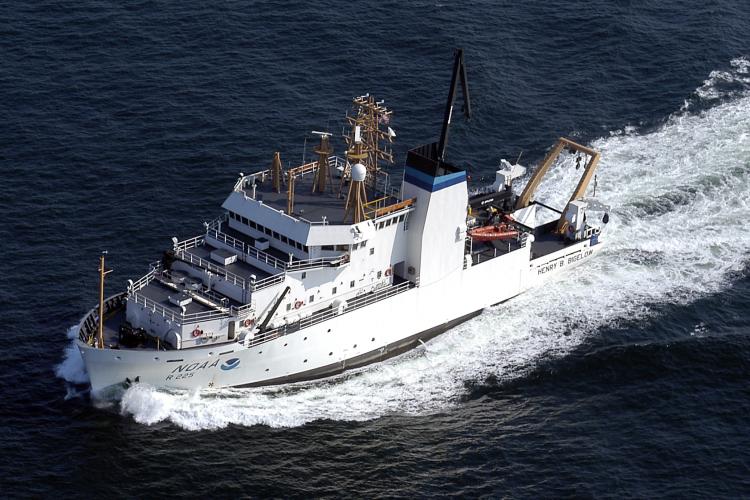
Specifications
Contact Info
Newport, RI
United States
About the ship
NOAA Ship Henry B. Bigelow was built by VT Halter Marine Inc. at Moss Point, Mississippi. The ship was commissioned on July 16, 2007 and is currently homeported in Newport, Rhode Island. Henry B. Bigelow is a state-of-the-art fisheries survey ship that studies a wide range of marine life and ocean conditions along the U.S. East Coast. The ship's primary mission is to study and monitor fish stocks. The ship also conducts habitat assessments and surveys marine mammal and seabird populations from Maine to North Carolina.
Henry B. Bigelow is the second in a series of Oscar Dyson-class fisheries survey vessels designed to meet the National Marine Fisheries Service's specific data collection requirements and the International Council for Exploration of the Seas’ standards for a low acoustic signature.
Henry B. Bigelow conducts both acoustic and trawl surveys. For its acoustic surveys, the ship uses a vertical beam echo sounder (VBES) and a multibeam echo sounder (MBES) to study fish and plankton biomass. The VBES provides information on fish depth, location, and size. The MBES has a fan-shaped beam that surveys a swath of ocean. Henry B. Bigelow’s unique MBES--one of only three systems of its type worldwide--acquires data from both the water column and the sea floor.
The ship conducts trawl sampling with a standardized, three-bridle, four-seam bottom survey net equipped with a rockhopper sweep. The trawls sample the biomass of fish in a given survey area. This helps scientists learn what species are in observed fish schools and gather other biological data.
The ship’s wet lab allows scientists to sort, weigh, measure and examine fish. The data is entered directly into the ship’s scientific computer network.
Henry B. Bigelow’s marine mammal and bird observation stations are equipped with sensors to aid researchers in identifying and tracking protected species.
Launched in September 2005, the 208-ft. Henry B. Bigelow was built for NOAA as part of the NOAA’s fleet replacement strategy to provide world-class platforms for U.S. scientists.
The ship is named after Henry Bryant Bigelow (1879-1967), a visionary oceanographer, zoologist and marine biologist whose work helped establish oceanography as a scientific discipline. His methods of interdisciplinary study--and his goal of understanding the ocean as a whole--continue to inspire NOAA’s contemporary ecosystems-based approach to marine science.

